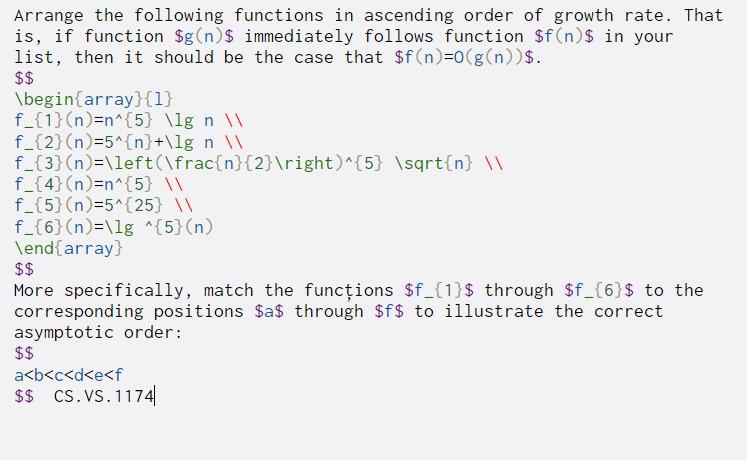Answered step by step
Verified Expert Solution
Question
1 Approved Answer
Arrange the following functions in ascending order of growth rate. That is, if function $g(n)$ immediately follows function $f(n)$ in your list, then it should

Step by Step Solution
There are 3 Steps involved in it
Step: 1

Get Instant Access to Expert-Tailored Solutions
See step-by-step solutions with expert insights and AI powered tools for academic success
Step: 2

Step: 3

Ace Your Homework with AI
Get the answers you need in no time with our AI-driven, step-by-step assistance
Get Started


